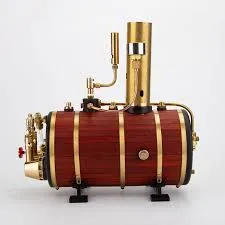
Nov . 15, 2024 11:33 Back to list
boiler temperature setting for hot water
Understanding Boiler Temperature Settings for Hot Water
Boilers play a crucial role in residential and commercial heating systems, especially when it comes to providing hot water for various applications. One of the vital aspects of boiler operation is the temperature setting for hot water. Setting the correct temperature can enhance efficiency, reduce energy costs, and ensure safety. This article delves into the importance of boiler temperature settings, factors to consider, and best practices for maintaining optimal hot water temperatures.
The Importance of Temperature Settings
Setting the right temperature for your boiler is essential for several reasons. First, it affects the efficiency of the unit. Most modern boilers are designed to operate efficiently within a specific temperature range. If the water temperature is set too low, the boiler will struggle to meet demand, causing it to work harder and consume more energy. Conversely, setting the temperature too high can lead to excessive energy use and increase the risk of scalding, particularly in households with young children or elderly residents.
Second, appropriate temperature settings impact the lifespan of the boiler. Operating the unit at excessively high temperatures can lead to increased wear and tear on various components, including heat exchangers and valves. This not only leads to more frequent breakdowns but can also shorten the overall lifespan of the boiler.
Finally, temperature settings influence the effectiveness of hot water sanitation. For applications requiring sanitary water, such as in hospitals or food service industries, maintaining higher temperatures can be crucial to prevent the growth of harmful bacteria like Legionella.
Factors to Consider When Setting Temperatures
When determining the optimal hot water temperature, several factors should be considered
1. Type of System Different heating systems may have varying optimal settings. For example, traditional storage water heaters typically work best at 140°F (60°C) to ensure a sufficient supply of hot water while minimizing the risk of bacteria growth. On the other hand, tankless systems often require different settings based on demand and usage patterns.
2. Usage Patterns Assess your household or facility's hot water demand. If there are periods of high usage, such as mornings when showers may overlap, a higher temperature setting may be necessary to ensure an adequate supply.
boiler temperature setting for hot water

3. Local Regulations In some areas, there are specific regulations regarding the maximum allowable temperature for hot water to prevent scalding. It's essential to familiarize yourself with these guidelines.
4. Safety Considerations When setting temperatures, always consider safety. Setting the boiler temperature too high can lead to severe burns. The U.S. Consumer Product Safety Commission recommends a maximum tank temperature of 120°F (49°C) to help prevent scalding accidents, particularly in homes with children.
Best Practices for Maintenance and Efficiency
To ensure that your boiler operates efficiently and safely, consider the following best practices
- Regular Inspections Schedule regular maintenance checks with a qualified technician to ensure that the boiler is functioning correctly and that the temperature settings are appropriate for your needs.
- Insulate Hot Water Pipes Insulating hot water pipes can help retain heat, reducing the need for the boiler to work harder and lowering energy costs.
- Install a Mixing Valve A mixing valve can help regulate the temperature of the hot water coming out of the tap, allowing you to set the boiler at a higher temperature while maintaining a safe output temperature at the fixtures.
- Monitor Energy Costs Regularly review your energy bills to gauge the efficiency of your boiler settings. If you notice unusual spikes, it may be time to reassess the temperature settings or seek professional advice.
Conclusion
The proper setting of your boiler temperature for hot water is critical to achieving a balance between comfort, efficiency, and safety. By understanding the factors that affect temperature settings and implementing recommended practices, homeowners and facility managers can optimize their boiler systems, ensuring the effective delivery of hot water while promoting energy savings and safety. Regular maintenance and awareness of local regulations will further enhance the safety and efficiency of your hot water system, leading to long-term benefits.
-
High-Efficiency Commercial Oil Fired Steam Boiler for Industry
NewsJul.30,2025
-
High-Efficiency Biomass Fired Thermal Oil Boiler Solutions
NewsJul.30,2025
-
High Efficiency Gas Fired Thermal Oil Boiler for Industrial Heating
NewsJul.29,2025
-
High-Efficiency Gas Fired Hot Water Boiler for Sale – Reliable & Affordable
NewsJul.29,2025
-
High Efficiency Biomass Fired Hot Water Boiler for Industrial and Commercial Use
NewsJul.29,2025
-
High-Efficiency Biomass Fired Hot Water Boiler for Industrial Use
NewsJul.28,2025
Related PRODUCTS






















